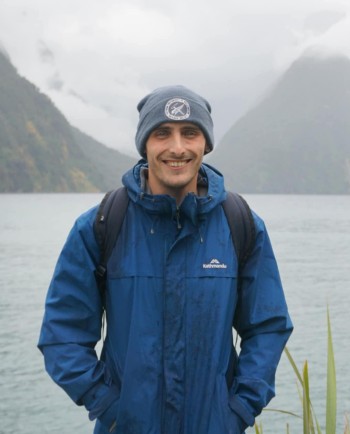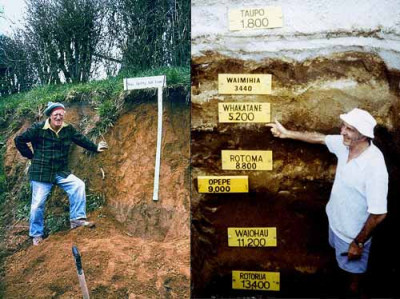 2024 Pullar-Vucetich Prize winner:
2024 Pullar-Vucetich Prize winner:
Stephen Piva
Stephen’s paper on the detection of volcanic glass from the 1.8 ka Taupō eruption in Antarctic ice is only the second case of definitively identified glass shards from New Zealand being identified in any ice core. This finding strengthens links between annually resolved ice-core paleoenvironmental records and New Zealand paleoenvironmental records for the Late Holocene by connecting to exactly to the same point in time.
The ice core dates also resolve the conflict regarding the true age of the Taupo eruption and the widened spatial distribution adds to the understanding of the capacity of exceptionally powerful and explosive Taupo eruption.
Past Pullar-Vucetich Prize winners
| Year | Person | From | For work on |
| 2022 | Martin Danisik | Curtin | Sub-millennial eruptive recurrence in the silicic Mangaone Subgroup tephra sequence, New Zealand. |
| 2020 | Callum Rees | Massey University | Tephrostratigraphic constraints on sedimentation and tectonism in the Whanganui Basin |
| 2018 | Magret Damaschke | Massey University | Tephrostratigraphic research into the eruptive history of Mount Taranaki. |
| 2016 | Jenni Hopkins | Victoria | A new way for identifying cryptotephras in lacustrine sediment cores. |
| 2012 | Natalia Pardo | Massey | Reconstructing the largest explosive eruptions of Mt. Ruapehu. |
| 2010 | Michael Turner | Macquarie University | Oxidation states in titanomagnetites to distinguish the different eruption styles of Mt Taranaki. |
| 2008 | Maria Gehrels | Plymouth University | Cryptotephras in northern New Zealand. |
| 2006 | Brad Pillans | ANU | Pleistocene silicic tephras of Wanganui Basin |
| 2004 | Alan Palmer | Massey | Onland and offshore tephra studies |
| 2002 | Vicki Smith | Auckland | Okataina Volcanic Centre |
| 2000 | Dennis Eden | Palmerston North | Multi-sourced distal tephras and landscape evolution, eastern North Island |
| 1998 | Shane Cronin | Massey | Tephra identification and Ruapehu and Tongariro ring plains |
| 1996 | Susan Donoghue | Massey/HKU | Tephrostratigraphic work on style of prehistoric eruptions, Mt Ruapehu |
| 1994 | Brent Alloway | Auckland | Tephrostratigraphy and chronology of the Taranaki and Wanganui regions |
| 1992 | Phil Shane | Victoria | Plio-Pleistocene tephrostratigraphic correlations in southern North Island |
| 1988 | No award made | - | - |
| 1986 | David Lowe | Waikato | Quaternary tephrostratigraphy of the Waikato Basin |
Alan Pullar and Colin Vucetich

In the 1950s and 1960s Alan Pullar (left) and Colin Vucetich (right) worked for the DSIR Soil Bureau, mapping soils in the North Island. Alan worked in Gisborne and Whakatāne, and Colin around Rotorua. They recognised that the soils were formed on volcanic ash layers, which were often visible in road cuttings.
The men started tracing out distinctive ash layers across the region. Work on ash layers (later called tephrostratigraphy) was outside official Soil Bureau policy and was banned. Much of their work was therefore done in weekends and holidays on what they called ‘secret correlation missions’.
Between 1963 and 1975 Colin and Alan published a series of papers on the sequence and characteristics of the main volcanic eruptions in the Taupō and Rotorua region. This work has been the foundation for later volcanological studies as well as the understanding of soil properties.
Initial funds for the Pullar Vucetich Prize were donated by family and colleagues of Alan Pullar and Colin Vucetich.
